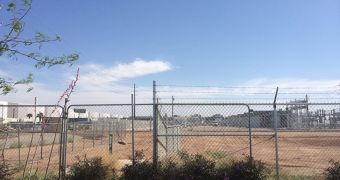New details have emerged regarding the Apple-contracted GT Advanced sapphire plant currently under construction in Mesa, Arizona. According to one report, the factory is already outputting the precious material which industry watchers believe is destined for larger iPhone displays.
Sources familiar with the operations unfolding at the Mesa, Arizona facility tell AppleInsider that “Despite being under construction [still], the plant is powered by a massive array of temporary generators and is already churning out product.”
In typical fashion, Apple is wasting no time in making vital components for its upcoming products. Many believe the sapphire is primarily targeted at future iPhone screens, but some also speculated that the company’s rumored iWatch would be using the material as well.
The sources who provided photographs of the construction site, including some aerial shots, also revealed that “Nearby the power bank is what looks to be a type of mini substation that will be used to pull electricity from the city's power grid, while two large chiller units pump coolant into the building to keep temperatures stable.”
Construction will be complete around June, according to the sources, “at which time manufacturing should reach full capacity.” While the maximum output remains to be quantified, the site is known to have accommodations for 1,700 furnaces “to make sapphire boules in bulk,” the sources said.
Leaked documents from the U.S. International Trade Administration revealed in January that the sapphire produced at the Arizona facility would end up somewhere outside U.S. boundaries. In other words, the ultra-hard material will end up on a production line, likely in China, where all iDevices are assembled.
The hardness and durability of sapphire is second only to diamond. The material occurs naturally but technology has enabled us to reproduce nature’s steps in a laboratory and achieve near-identical results, more recently in massive quantities.
The price of the material is still rather high, with the cost of a single iPhone sapphire screen being projected at around $13 (€9.46). By comparison, a similar sheet of Gorilla Glass made by Corning costs only around $7 (€5.10).
Corning has slammed smartphone vendors who plan on using the substance in their upcoming devices as being ignorant to the fact that sapphire production is damaging to the environment. The claim remains to be verified, or at least compared to the carbon footprint left by its own glass production.
Corning said that sapphire is no less brittle than its own product, and that it still scratches. The American glass manufacturer also noted that sapphire is less transparent to light than its Gorilla Glass, but by how much it remains unknown.

 14 DAY TRIAL //
14 DAY TRIAL //